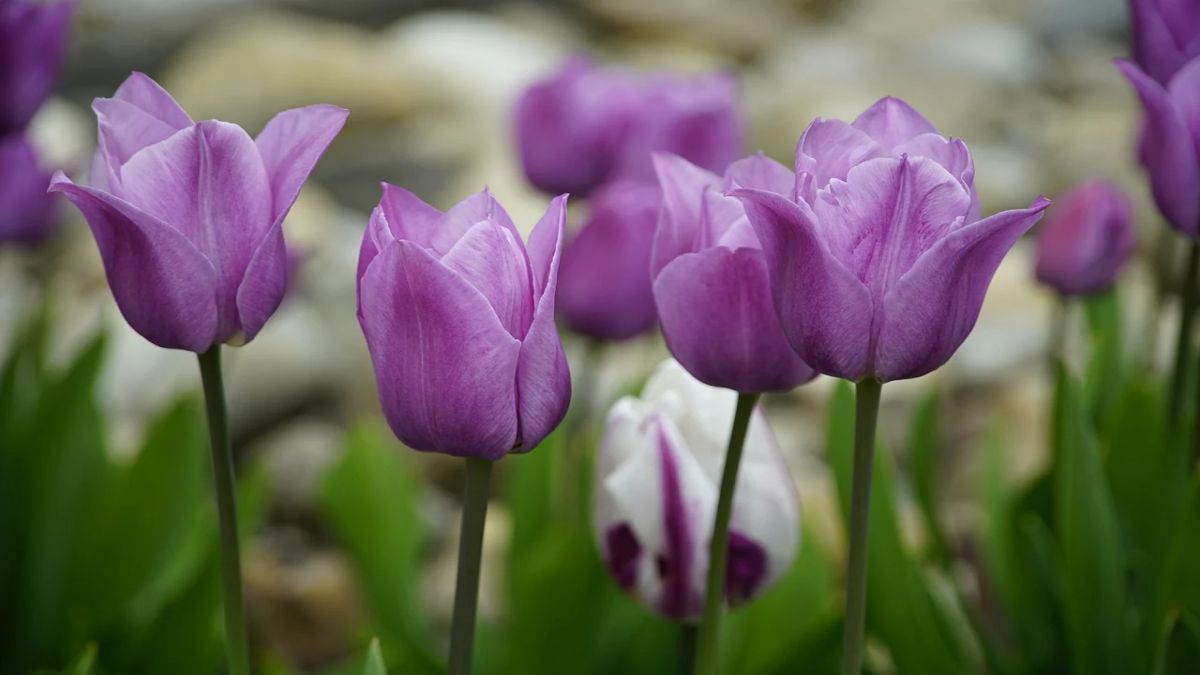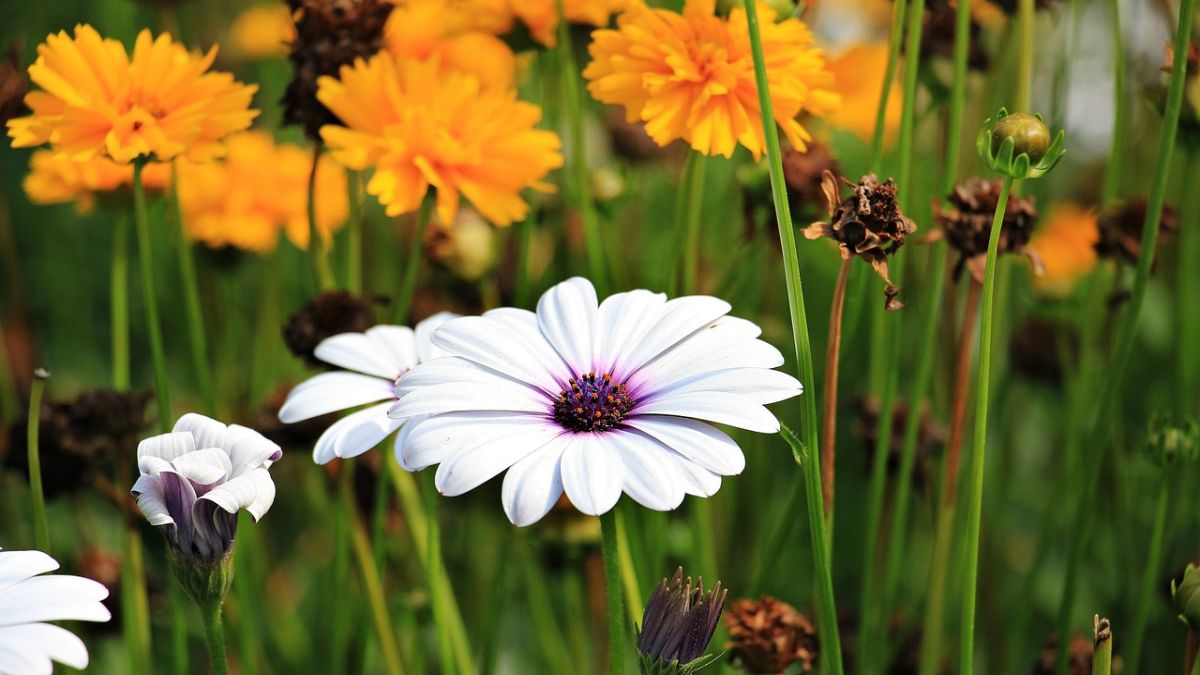Advertisement
Hey there, fellow flower fanatic! As I write this, the sun is shining, the birds are chirping, and my garden is bursting with color. It's the perfect time to get out there and start planting some gorgeous blooms, don't you think?
Now, I know gardening can seem a bit intimidating, especially if you're new to it. But trust me, with a little know-how and a whole lot of enthusiasm, you'll be growing the envy of the neighborhood in no time.
I've been at this for years, and I still get giddy every time I see a new flower bud peeking through the soil. It's like magic!
Choosing Your Flowers
The first step is deciding what kind of flowers you want to grow. Do you prefer bold and bright, or soft and subtle? Fragrant or unscented?
Annuals that bloom all season long, or perennials that come back year after year? The options are endless, my friend!
Personally, I'm a big fan of mixing it up. Last year, I planted a rainbow of zinnias and marigolds that had the whole block talking.
And my perennial garden is a riot of color from spring to fall - daylilies, coneflowers, lavender, you name it! I even have a little patch of tulips and daffodils that never fails to put a smile on my face in early spring.
The key is to choose flowers that will thrive in your particular growing conditions. Pay attention to things like sun exposure, soil type, and climate. And don't be afraid to experiment! You never know what hidden gems you might uncover.

Preparing the Soil
Now, I know soil might not be the most glamorous part of gardening, but it's the foundation for a truly spectacular flower show. Start by clearing out any weeds, rocks, or debris from your planting area.
Then work in some compost or other organic matter to enrich the soil and improve drainage.
If you're planting in containers, make sure to use a high-quality potting mix. I like to add a bit of perlite or vermiculite to help aerate things up.
And don't forget to mix in a slow-release fertilizer to give your plants a nutrient boost all season long. It's like a multivitamin for flowers!
Planting Tips
When it comes to actually putting your flowers in the ground, there are a few tricks to keep in mind. First, dig your holes 2-3 times as wide as the root ball and just as deep. This gives the roots plenty of room to spread out and get cozy.
Gently loosen those roots before planting, too. It's like giving them a little pep talk before their big debut. Then plant at the same depth as the plant was growing in its container. Burying the stems too deep can cause rot, and we don't want that!
Space your plants according to their mature size to avoid overcrowding. Check the tag for recommended spacing. And water thoroughly after planting to settle the soil and eliminate any air pockets around those precious roots.
I like to plant in groups of 3 or more for maximum impact. It's like having a flower party! And don't forget to label your plants so you remember what's what. I've been known to get a little carried away and forget where I put things. Oops!

Ongoing Care
Once your flowers are in the ground, the real work begins. But don't worry, it's not as daunting as it seems. Regular maintenance is key to keeping your garden looking its best all season long.
Advertisement
Water regularly, about 1 inch per week. Adjust as needed based on weather and plant needs. I like to stick my finger in the soil to check moisture levels. If it's dry, it's time to water!
Deadhead spent blooms to encourage more flowers. Just pinch or snip off the dead heads. It's like giving your plants a little haircut to keep them looking sharp.
Fertilize every 4-6 weeks with a balanced liquid fertilizer or slow-release granules. It's like a flower buffet!
Weed frequently to prevent competition for water and nutrients. I like to think of weeding as a workout for my garden. And don't forget to stake or cage tall plants like dahlias and gladiolas to prevent flopping. It's like giving them a little support system.
Mulch around plants to retain moisture and suppress weeds. 2-3 inches of mulch is ideal. It's like a cozy blanket for your flowers. I try to spend a little time in my garden each morning to check on things.
It's a great way to start the day and catch any issues early. And don't be afraid to ask for help if you're unsure about something - your local nursery or extension office are great resources.
Seasonal Considerations
As the seasons change, so do the needs of your flowers. In spring, prune back any dead growth from winter, divide overcrowded perennials, and plant cool weather annuals like pansies and snapdragons. It's like a fresh start for your garden!
Summer is all about keeping things blooming and hydrated. Deadhead regularly, water deeply, and mulch well to combat heat and drought. And don't forget to pinch back leggy plants to encourage bushiness. It's like a little flower haircut!
Fall is the time to cut back perennials after frost kills the foliage, plant spring bulbs for early color next year, and lift tender bulbs like dahlias to store for winter. It's like putting your garden to bed for a well-deserved rest.
And in winter, mulch tender plants to protect their roots, check for and remove snow buildup on branches, and enjoy your garden from inside. It's the perfect time to start planning for next year's flower extravaganza!
I find it helpful to keep a garden journal to track what I planted where and how things did. It's like a flower diary! And it's so much fun to look back and see how your garden evolves over time.

Troubleshooting
Even with the best care, sometimes things can go wrong in the garden. But don't worry, we've all been there! Pests like aphids, Japanese beetles, and spider mites can damage plants.
I like to use insecticidal soap or neem oil to control them organically. It's like a natural pest control system.
Diseases like powdery mildew and black spot can cause leaves to yellow and drop. Improve air circulation and use a fungicide if needed. It's like a flower health spa!
Poor growth or flowering can be caused by too much or too little sun, water, or nutrients. Adjust your care accordingly.
And let's not forget about those pesky critters like rabbits and deer. They can wreak havoc on your flowers. Use fencing, repellents, or plant deer-resistant varieties. It's like a flower fortress!
I've definitely had my fair share of garden fails over the years. But I've learned that every problem is an opportunity to learn and grow as a gardener. Don't get discouraged - just keep at it! It's like a never-ending flower adventure.
Conclusion
Whew, that's a lot of info! But I hope these tips give you the confidence to dive in and start growing some beautiful blooms.
Remember, gardening is a journey, not a destination. Have fun with it, get your hands dirty, and enjoy the process. Your flowers will thank you!
Let me know if you have any other questions. I'm always happy to chat about gardening. Happy planting, my friend! Let's grow something gorgeous together.
Advertisement





